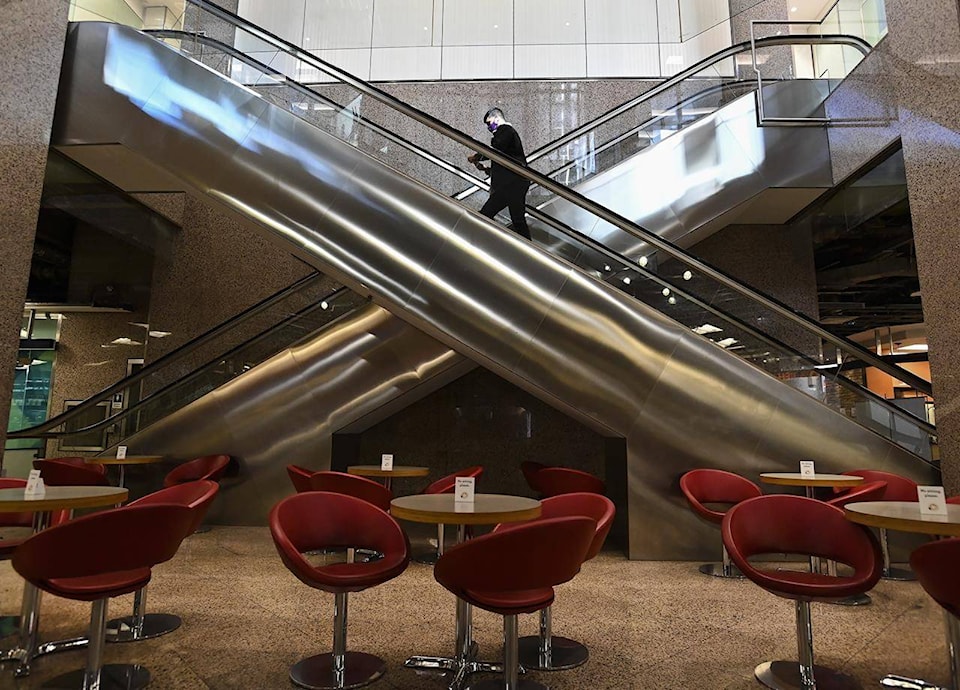TORONTO — For the last 34 years, Alex Zilberberg’s mornings have begun with a lineup of customers so strong that his The Bagel Stop locations do 70 per cent of their business before 10 a.m. even hits.
But since the COVID-19 pandemic began, the hustle and bustle has disappeared from Toronto’s financial district and underground PATH system his franchisees occupy.
“I used to say I’ve seen it all,” said Zilberberg, who co-founded the bagel chain with his brother-in-law Felix Zonenberg in 1987.
“We’ve lived through the good times and the bad times, but by far these are the worst times that I’ve ever seen.”
Business at The Bagel Stop’s dozens of locations has been down by up to 90 per cent some weeks and like many businesses in the area, he has little hope that it will return quickly.
While Ontario’s reopening plan has returned customers to businesses in most corners of the city, office towers in the financial district and connected to the PATH — a more than 30-kilometre stretch of underground shops and restaurants —are still largely unoccupied as companies allow their staff to keep working from home.
Business owners fear the lack of foot traffic and appetite to get back to offices could mean a recovery will take months or even years and put them well behind companies operating in other areas that are less dependent on the work crowd.
“The best real estate in Canada suddenly became the worst real estate in Canada, literally overnight,” said Zilberberg, who has locations in Commerce Court, Brookfield Place, Scotia Plaza and the TD Centre.
On top of the locations seeing diminished food traffic, he said the spots have also made food delivery models too tough to pursue because most couriers won’t take the time to navigate the PATH to pick up orders and few want to leave their bikes or cars parked outside.
Still, some of his franchisees prepare to greet customers every day.
“The ones that are open say, ‘I probably can make as much money being closed as I am being open because all I’m doing is just turning over inventory, making literally a pittance,’” he said.
“But they say, ‘I’d rather sit in the store and have my face out there and see whatever customers that I can.’”
Zilberberg is hopeful that some people will return to work and bring back their coffee-and-bagel habits in the fall, but he’s not confident everyone will flood back to the area.
“Franchisees…haven’t made a penny in the last year and a half, and they can’t do it for the next year and a half,” he said.
“No one can not bring home a living for three years straight, so that in itself is going to become an issue.”
Zilberberg doesn’t expect business to bounce back to pre-pandemic levels until at least 2022.
Even when people do return to the area, he worries some won’t visit as often as they once did because they’ll have more flexible work arrangements and others will shy away from enclosed spaces where the virus can spread more easily.
This report by The Canadian Press was first published July 6, 2021.
Tara Deschamps, The Canadian Press
